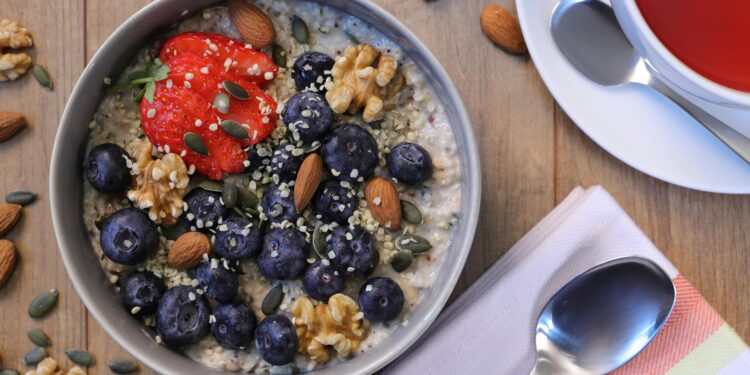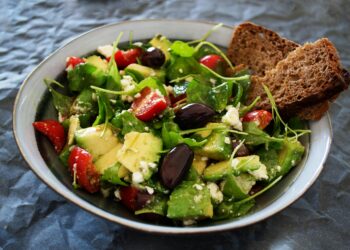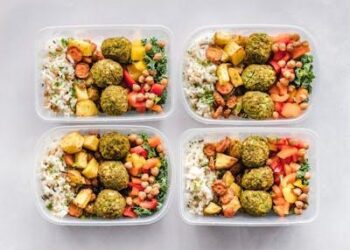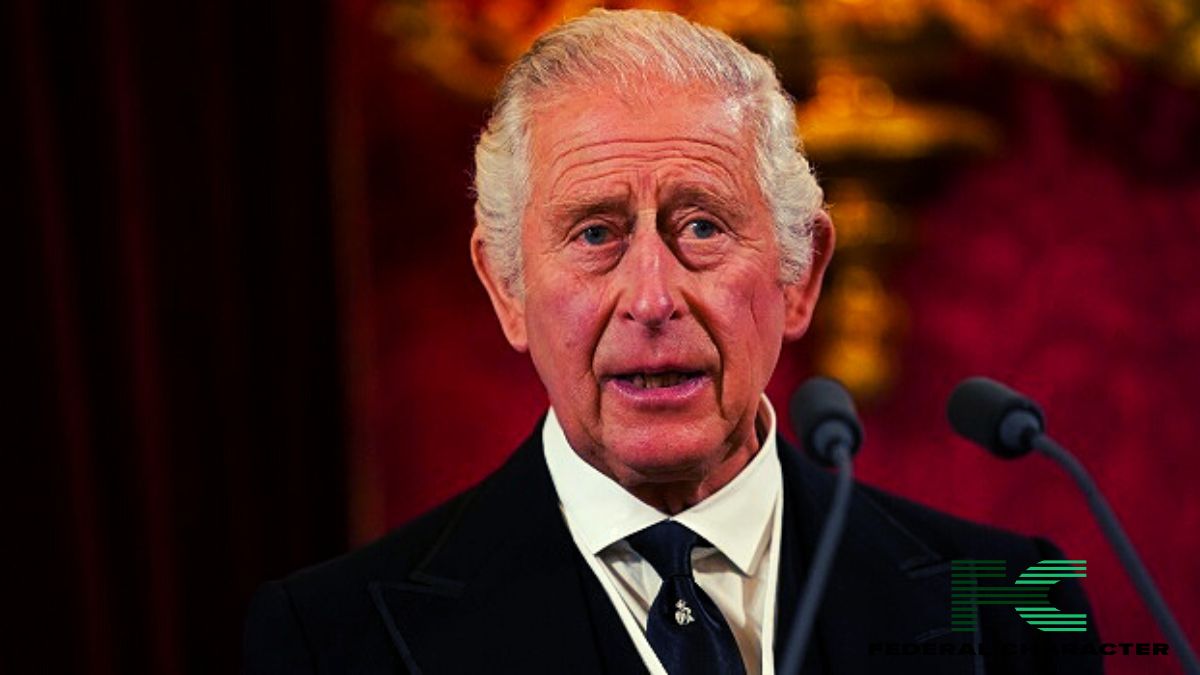Just a reminder that fiber is important to the body. If you ask different people what they know about fiber, best believe you’ll be getting different answers. People only acknowledge things for what it do for them. Some might tell you that fiber helps in digestion, some might tell you fiber is great for weight management, while others might say it reduces heart disease.
All of which are true, it’s just that their response is based on what fiber does for them. So what is fiber? Fiber is basically a type of carbohydrates that our bodies can’t digest. It comes in two main types: soluble fiber and insoluble fiber. In this article, we’ll look at each type of fiber, examples of fiber rich foods, some fiber rich meal ideas, and tips for including fiber into your diet.
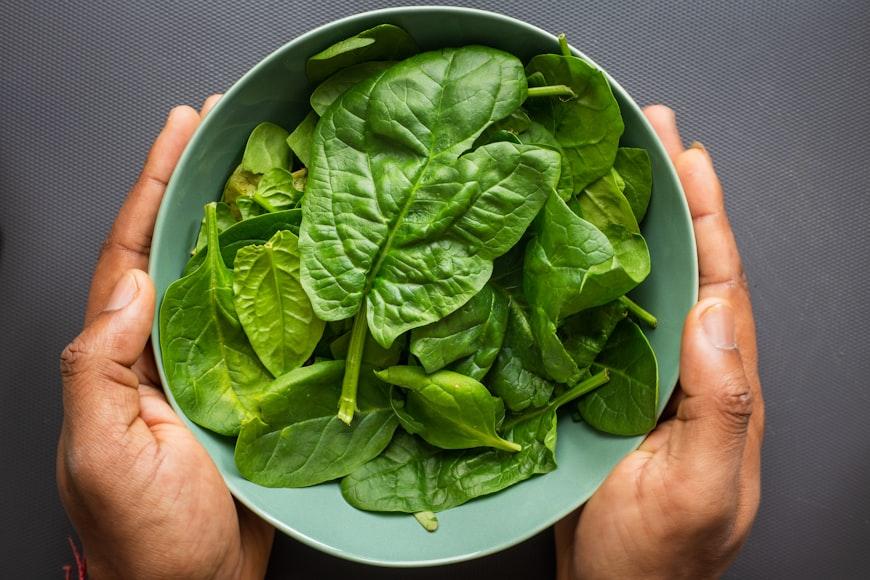
Types of Fiber
- Soluble Fiber: This type of fiber dissolves in water and forms sort of like a gel-like substance in the stomach. Example are oats, beans, apples, and citrus fruits.
- Insoluble Fiber: This fiber type doesn’t dissolve in water. It adds bulk to your stool and helps digestion easily. Examples include grains, nuts, cauliflower, and potatoes.
How Much Fiber Do You Need?
Now that you know how important fiber is, the next question is how much fiber do we need? Some people tend to go overboard with the amount of fiber they consume in a day. They’d eat a fibrous meal three times a day. However, on average, men should at least aim for 30-38g of fiber per day. Women should aim for 21-25g of fiber a day.
Fiber-Rich Food Categories
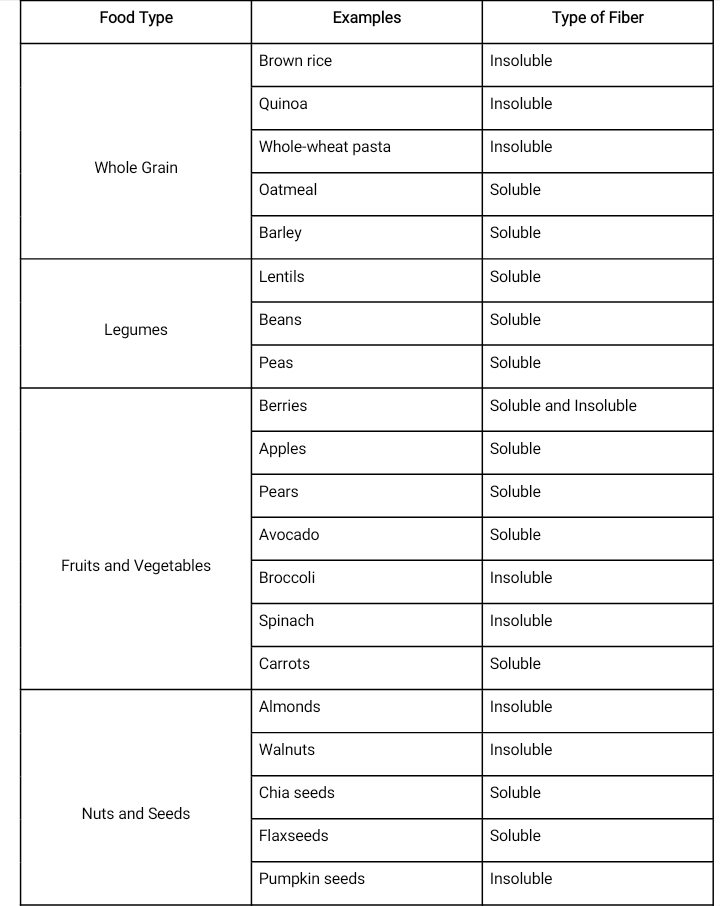
Fiber-Packed Meal Ideas
What’s For Breakfast?
- Oatmeal + Fruits + Nuts
- Whole-grain toast + Avocado + Poached Egg
- Smoothie bowl + Chia Seeds + Fruits
What’s For Lunch?
- Lentil + Whole-grain Bread
- Salad + Mixed Greens + Legumes + Vinaigrette
- Whole-wheat Wrap + Hummus + Vegetables + Grilled Chicken
What’s For Dinner?
- Baked Salmon + Roasted Vegetables + Brown Rice
- Stir-fry Vegetables + Tofu + Whole-Grain Noodles
- Chicken Curry + Brown Rice + Naan Bread
Tips For Incorporating Fiber Into Your Meals
1. Start slow: This is a pretty obvious tip. When adding more fiber to your diet, don’t go all-in at once. You can start by eating salads daily, then adding nuts to the mix. You have to do this gradually to avoid digestive discomfort like bloating and gas.
2. Stay hydrated: Fiber and water are best friends, they go hand in hand. You need to drink a lot of water to help fiber move through your digestive system smoothly.
3. Mix it up: I hope you’re not planning to stick to one type of fiber? You might love some fibrous foods like berries, but despise cauliflower. So you may just want to stick with berries. But the goal here is to add a variety of fiber-rich foods to your diet, so you can reap the benefits of both soluble and insoluble fiber.
4. Supplements: Fiber supplements are also an option, but that should be your last resort. Whole foods are by far better than any supplement. However, if you do think that you need them, make sure you talk to your doctor to see what works for you.
Bottom Line
At the end of the day, fiber is important for keeping your body in check. Whether it’s helping with digestion, managing weight, or even reducing the risk of heart disease, fiber plays a key role. There are two types, soluble and insoluble, and both do different things to keep you healthy. The best way to get enough fiber is by eating a variety of foods like whole grains, fruits, veggies, and legumes. Trust me, your body will thank you!

